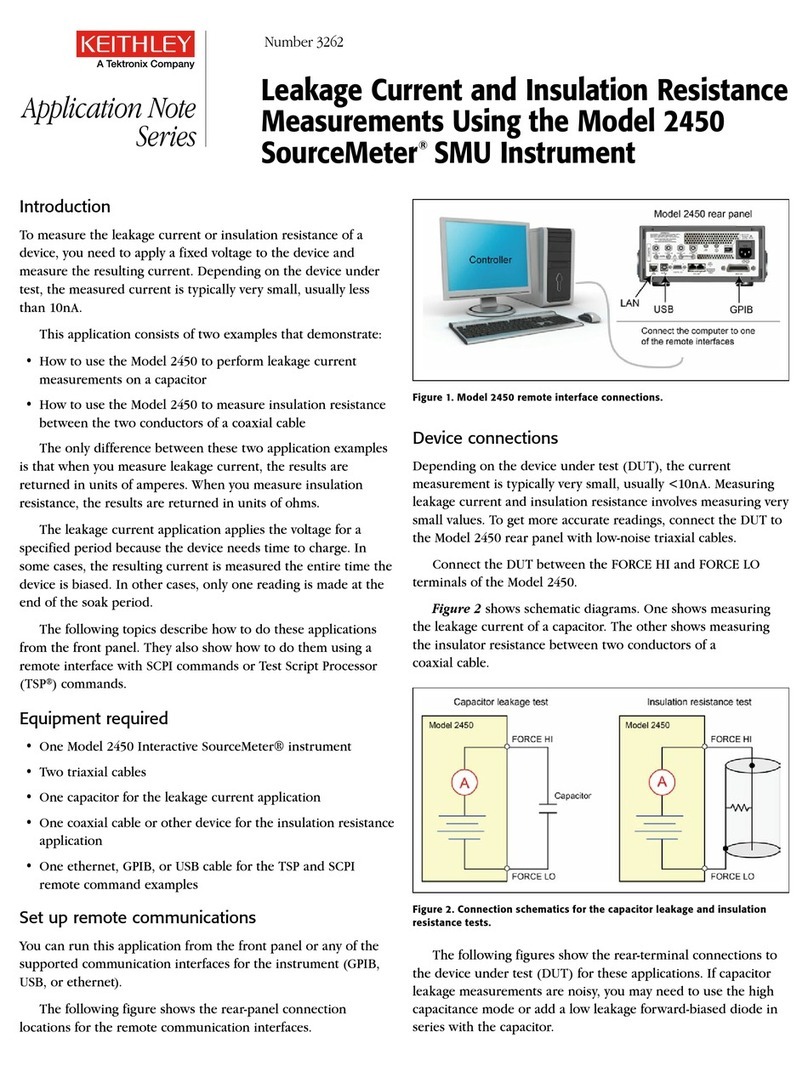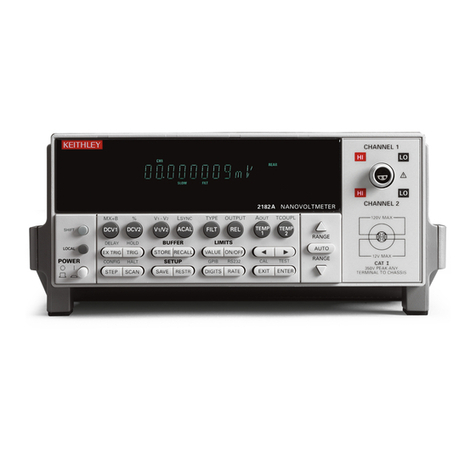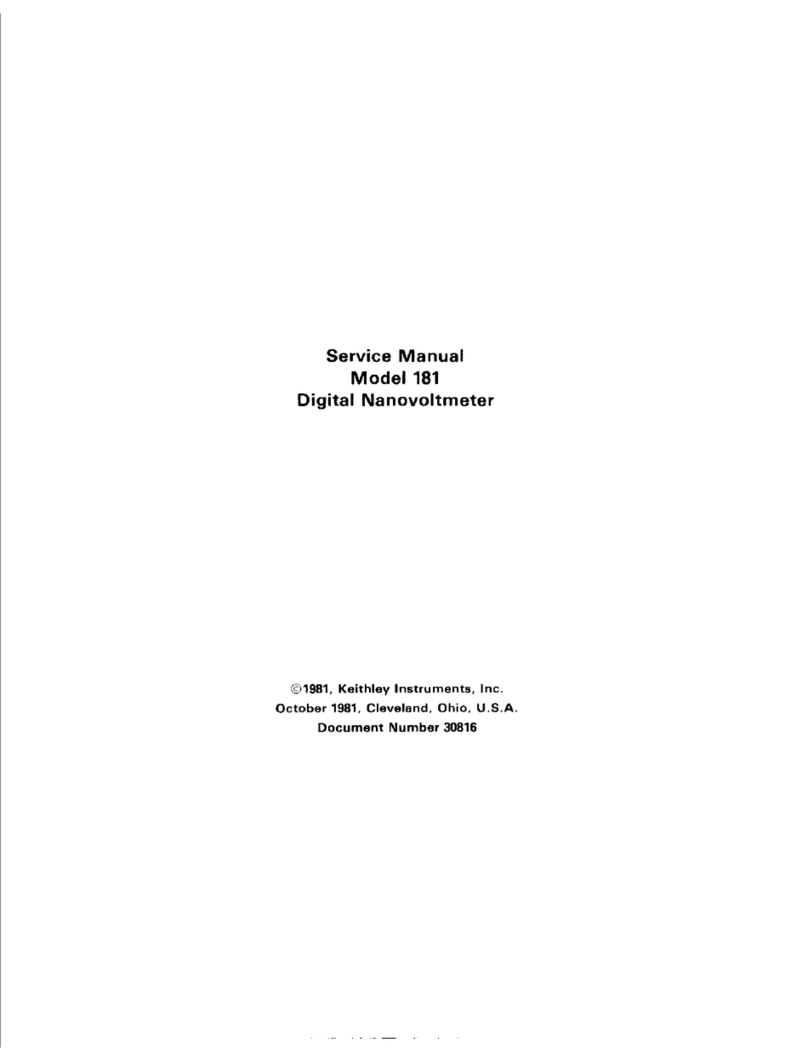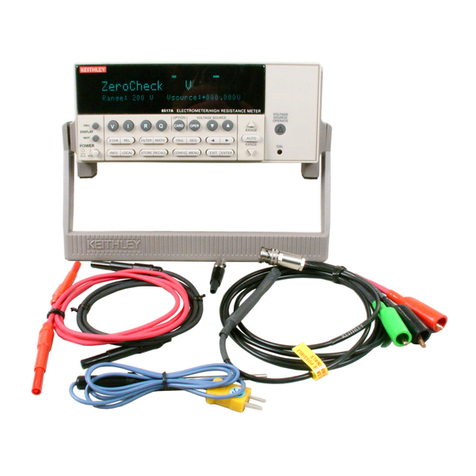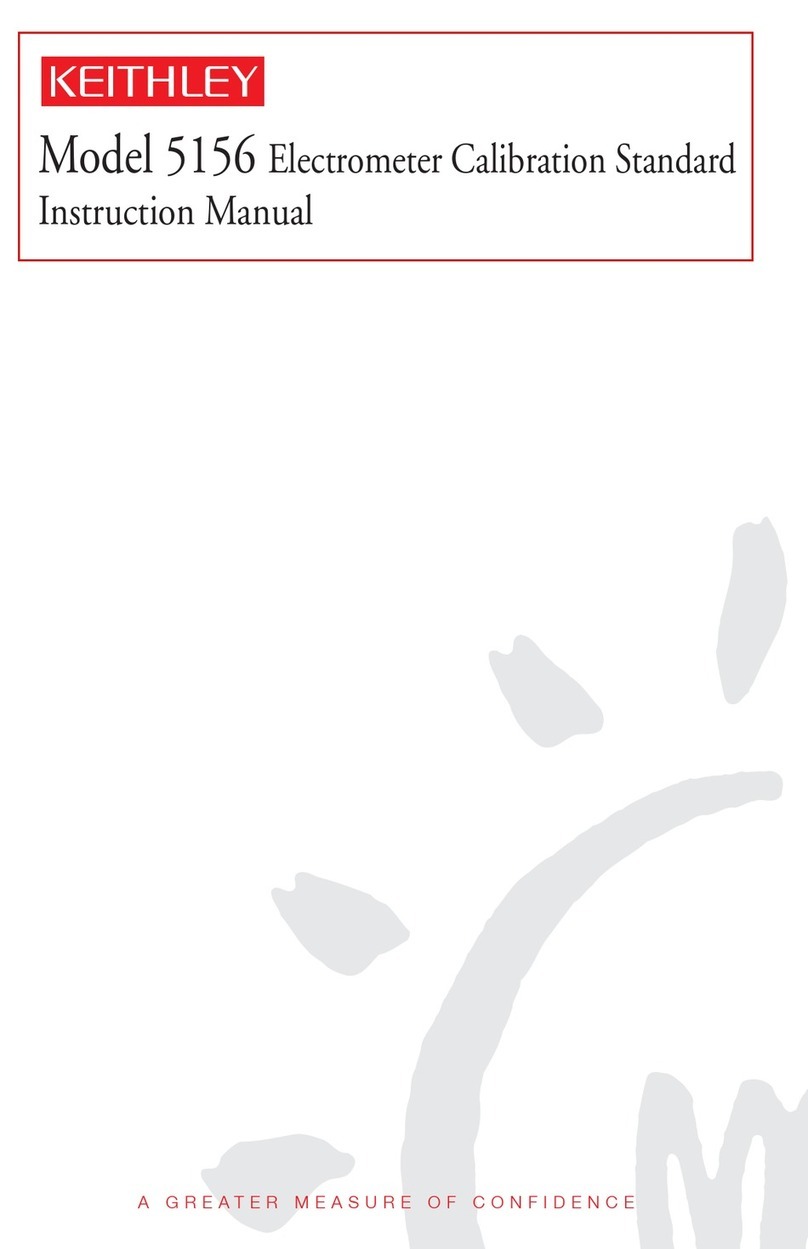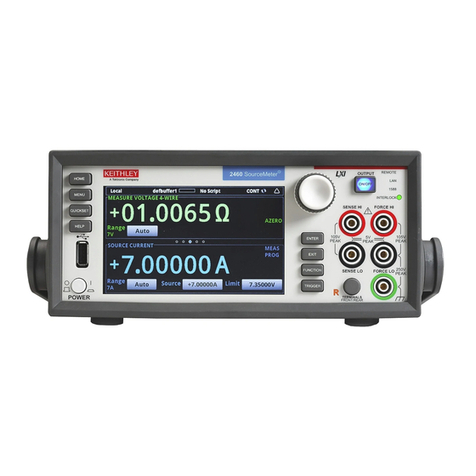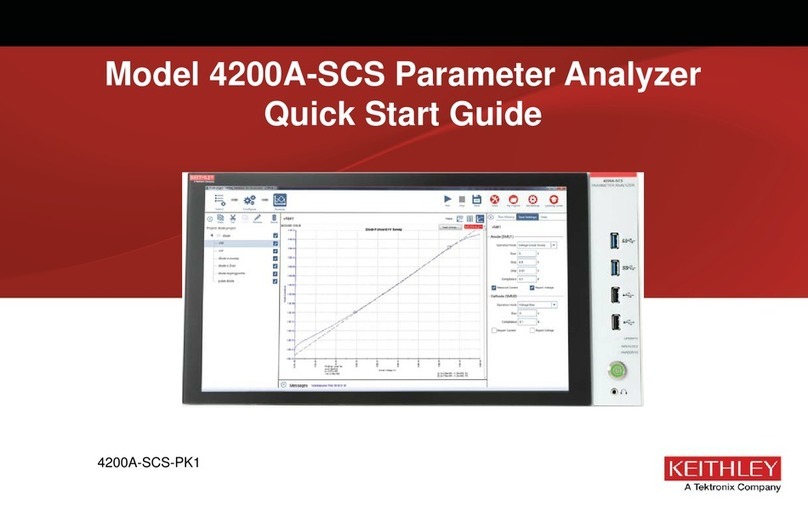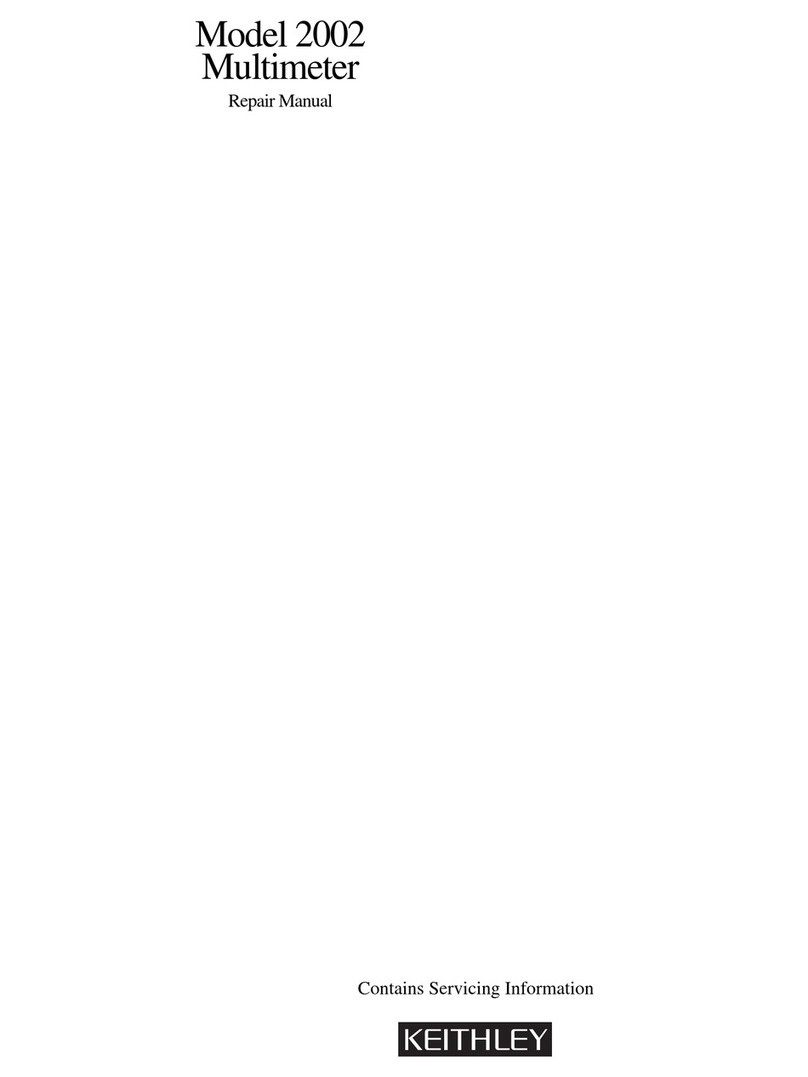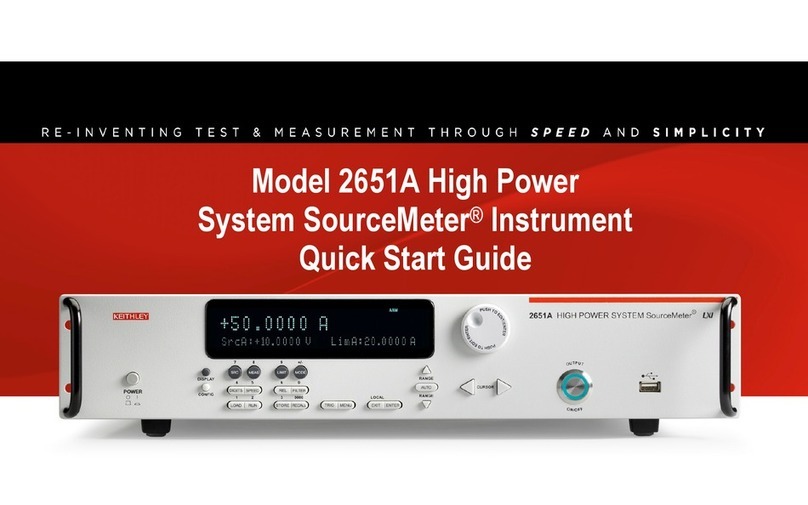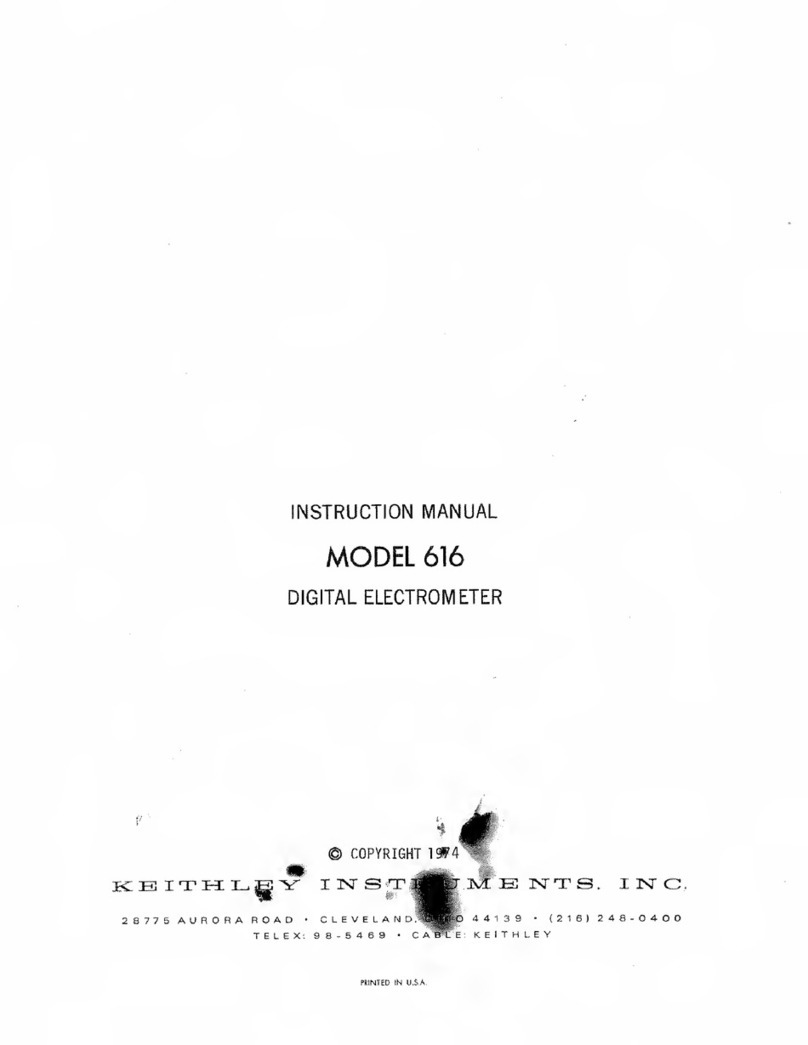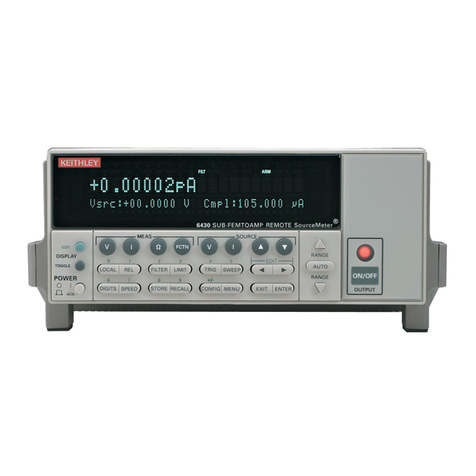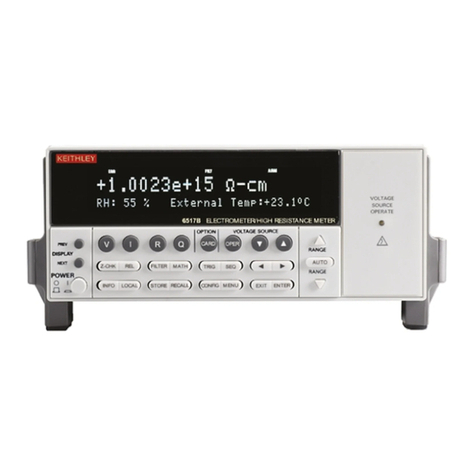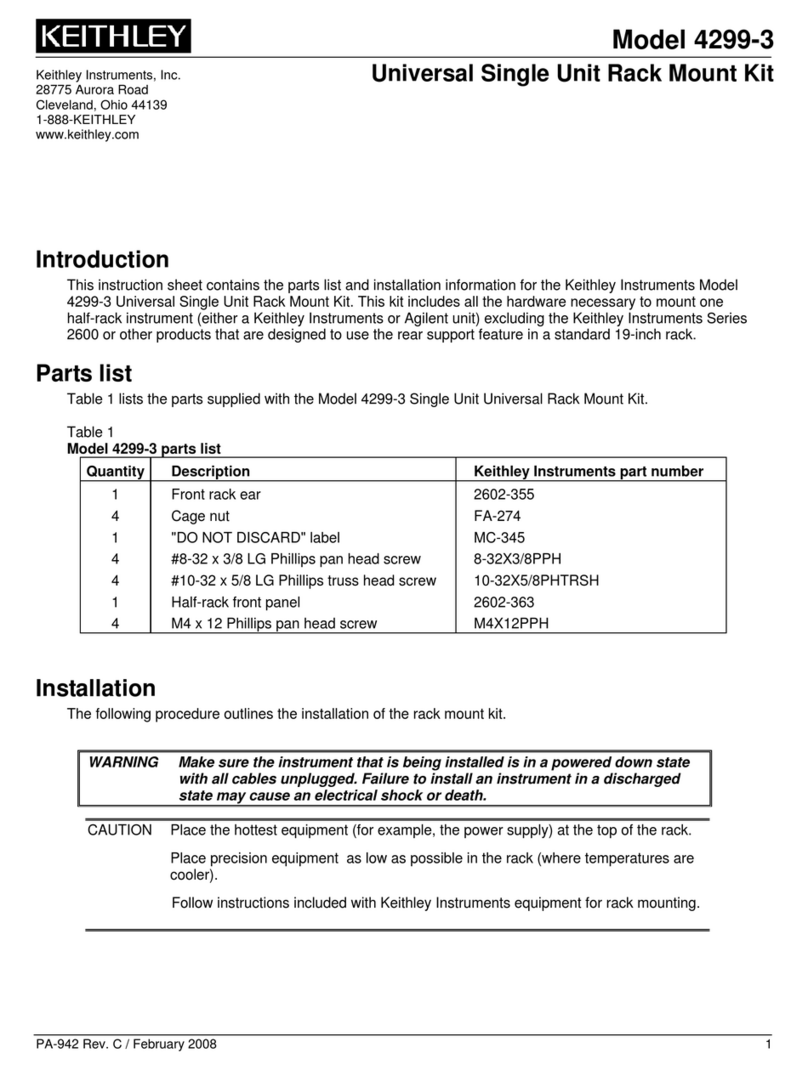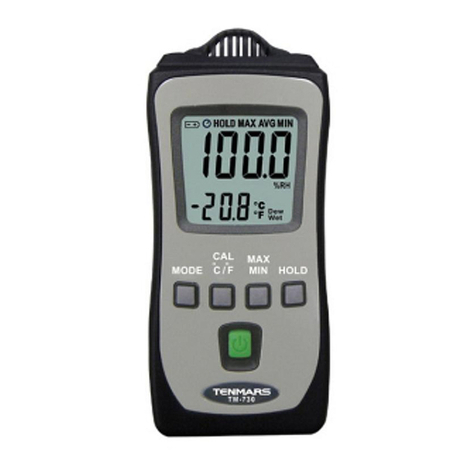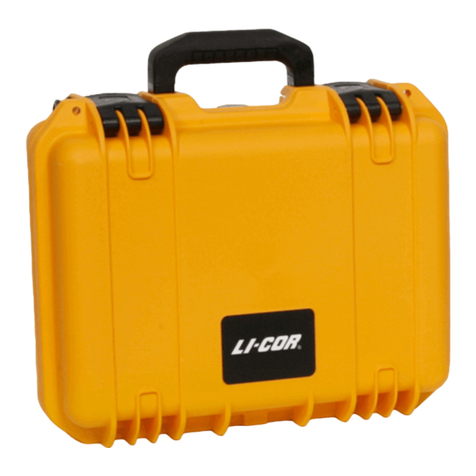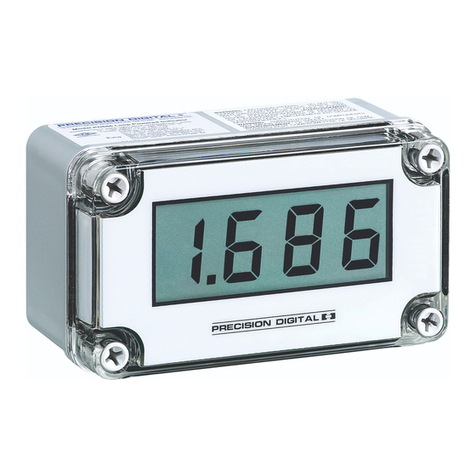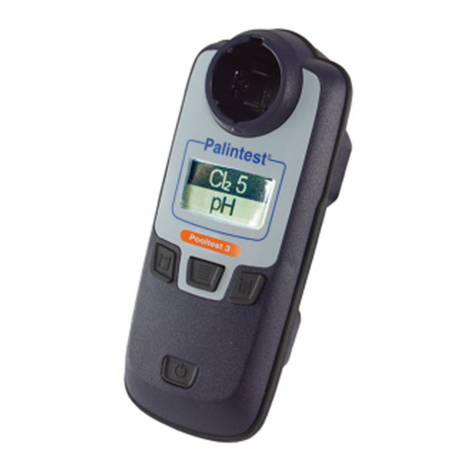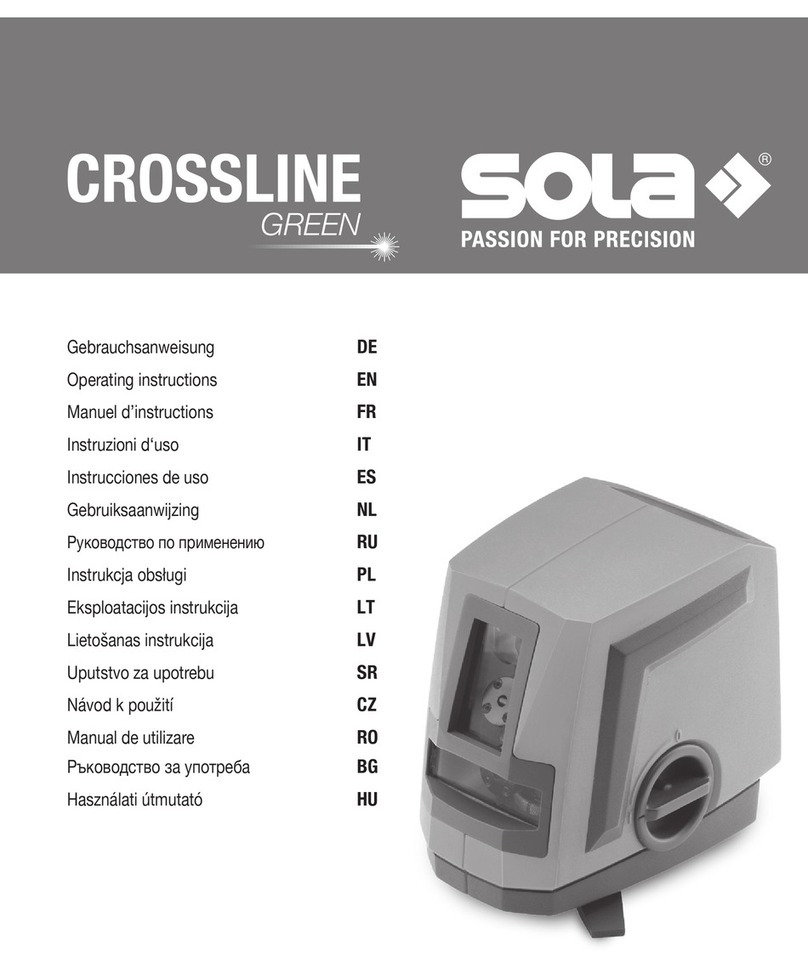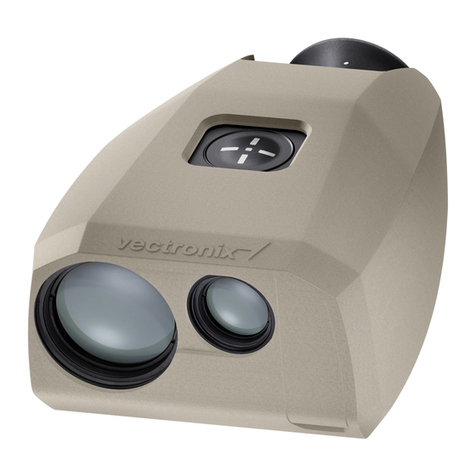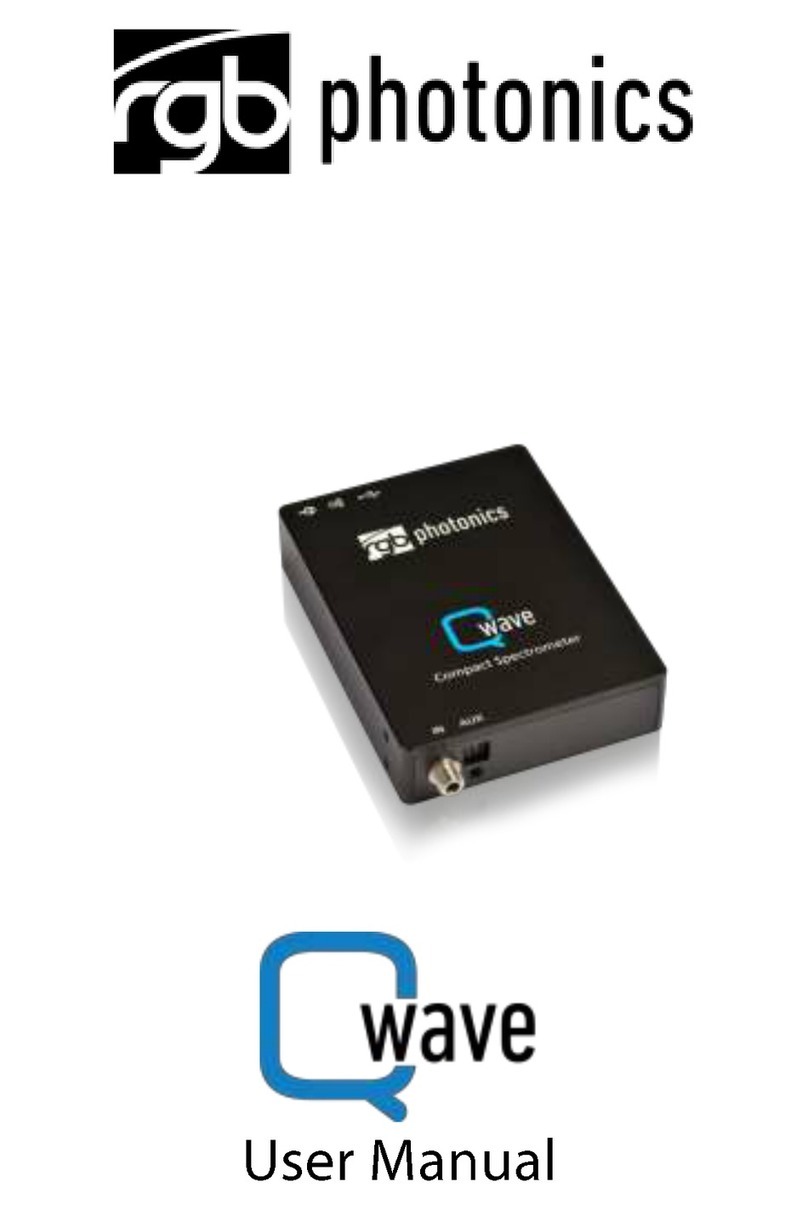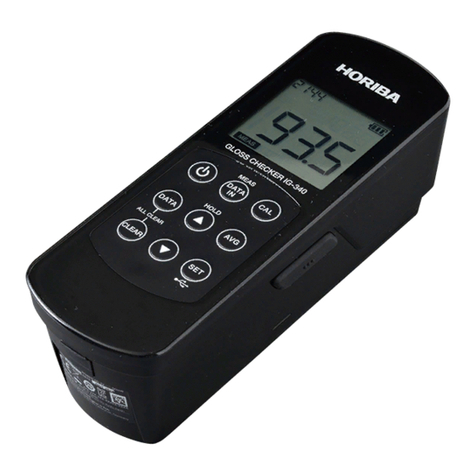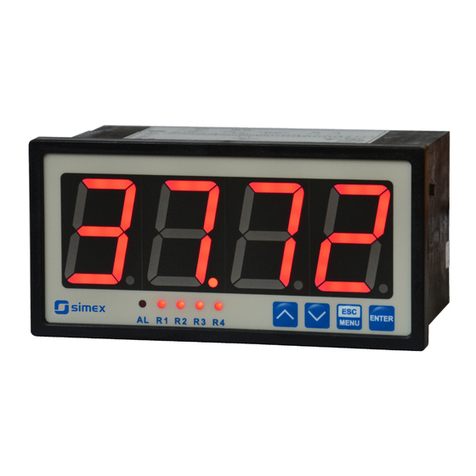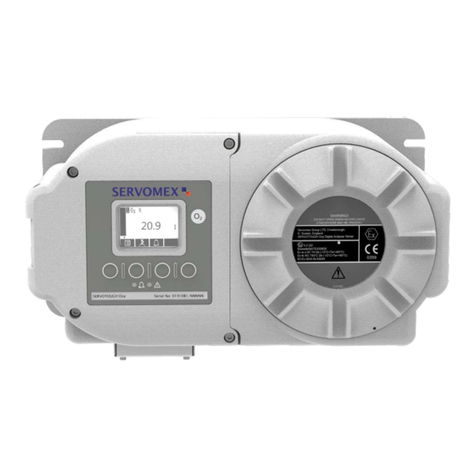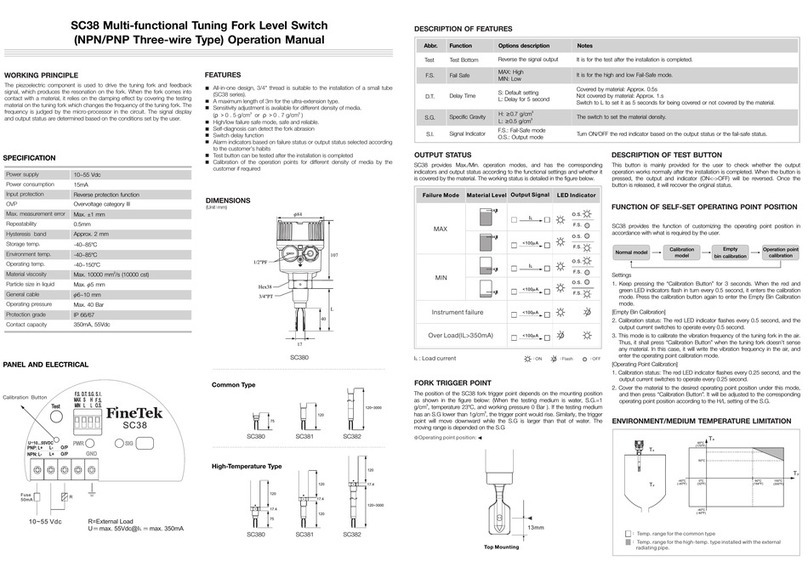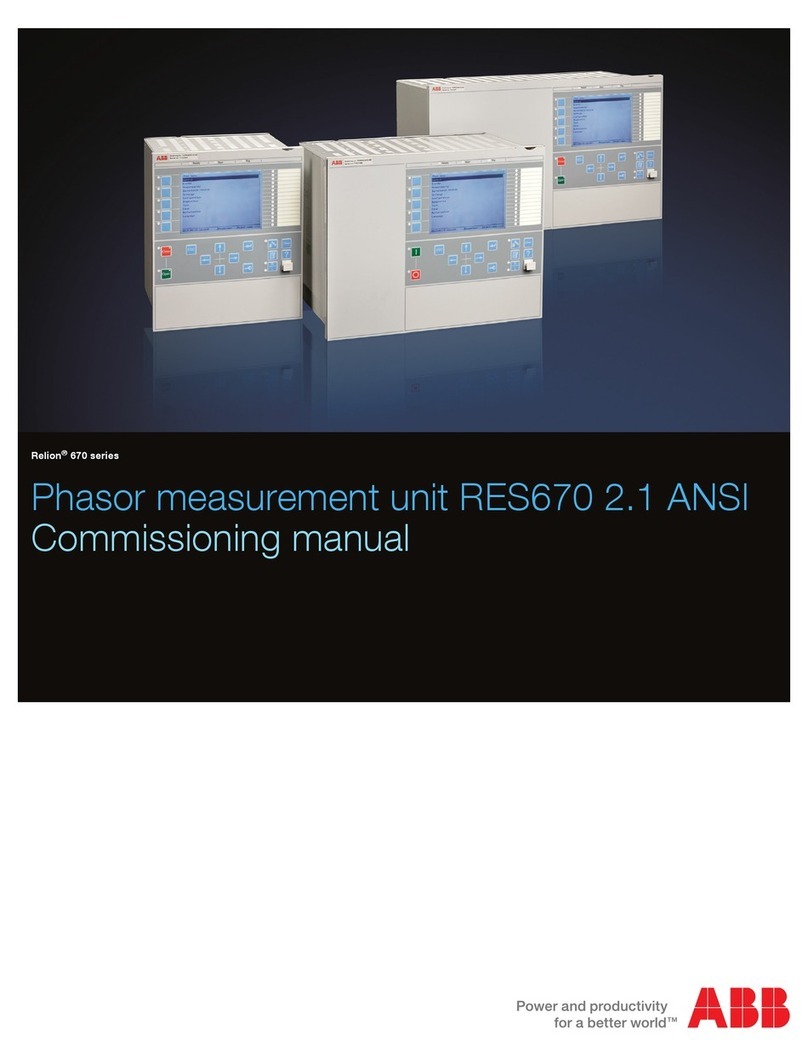
CIRCUIT DESCRIPTION MODEL 660A DIFFERENTIAL VOLTMETER
amplifier, V3001. The amplified output of V3001 is converted to a dc signal by light
modulator E3001 and then is amplified by the two-stage differential dc amplifier, V3002
and V3003. The amplifier output is applied to the grid of the series tube, V3004, to
nullify input variations. Capacitor C3004 is used in the ac feedback circuit.
C. The temperature-compensated zener diode, D3003, is used as the basic reference since
typical variations are limited to less than 20 ppm par year and 5 ppm per OC. Thus, a
highly stable reference which eliminates manual standardization is provided with respect
to both time and temperature, The zener diode will also withstand shock and vibration.
d. The regulated 500-volt output of V3004 is either applied directly to the Kelvin-
Varley divider or it is divided to 50, 5 or 0.5 volts by very stable wirewound resistor
networks. The WGE Switch, 53008, determines which network is used. The 50-volt range
divider consists of resistors R3030, R3032 and R3033; the 'j-volt, of R3030, R3035 and
R3036; and the 0.5-volt of R3030, R3038 and R3039. Using potentiometers R3032, R3035
and R3038 accurately sets the voltage division on each range.
4-3. KELVIN-VARLEY DIVIDER.
a. The Kelvin-Varley divider precisely divides the reference voltage for nulling an
unknown voltage. It is, in effect, a constant input impedance decade potentiometer, con-
sisting of resistors R3040 through R3088. The resistors within each decade are matched;
the decades are matched for each instrument.
b. Each decade of the Kelvin-Varley divider, except the first, R3040 through R3045,
parallels two resistors of the preceeding string. Between the two contacts of the first
Reference Voltage Switch, S3003, the total resistance is 40 kilohms (80 kilohms in para-
llel with the 80 kilohms total resistance of the four remaining strings). With the
RANGE Switch set at 500, 100 volts dc will appear across the contacts of Reference Voltage
Switch S3004, 10 volts across 53005, 1 volt across 53006, and 0.1 volt across 53007.
4-4. NULL DETECTOR. The Model 660A uses a null detector with a chopper stabilized,
feedback amplifier. The input signal is attenuated, if necessary, and sent through a
three-stage R-C filter. The signal is then amplified and applied to the meter.
a. The null detector has three full-scale sensitivities, 0.1, 1 and 10 millivolts.
Above the lo-millivolt range, the input is divided by resistors R1004 through R1009 to
the 10 millivolts. The full-scale sensitivities are determined by one of three feed-
back resistors, R1040
to
R1042, in the circuit. A three-stage R-C filter, consisting of
RlOlO, RlOll, 61003, R1012, C1004, Rl018 and C1005, is used to decrease the ac input
components.
b. The light modulators El001 and El002 convert the difference between the filtered
input voltage and the output of the Kelvin-Varley divider into an ac voltage, which is
fed to a four-stage ac coupled amplifier, VlOOl and V1002. The amplifier output is then
demodulated by light modulator El003 and filtered by capacitor C1019. The null detector
meter, MlOOl, indicates the value of the filtered signal. A 42-cps oscillator drives
the light modulators. Using a drive source harmonically unrelated to the standard line
frequency minimizes 60-cps pickup effects.
c. One arm of the feedback network is formed by resistors R1043 to R1046, and one of
the feedback range resistors, R1040 to R1042. Resistor R1039 forms the second shunt arm.
The feedback is applied
to
light modulator E1002.
14 0665



















